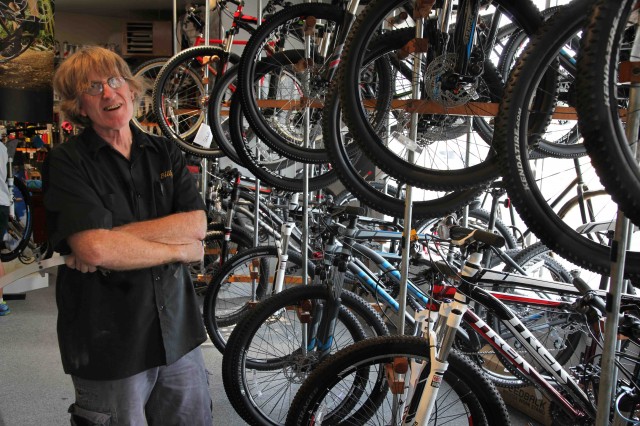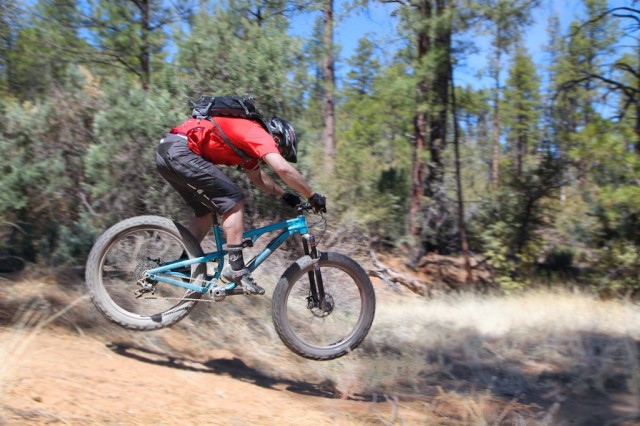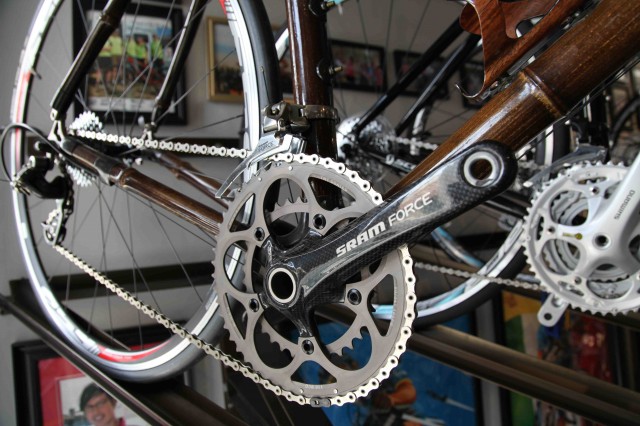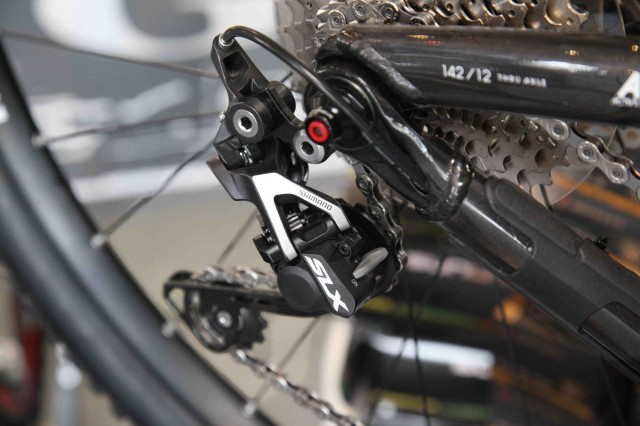Buying a new bicycle is a process oft maligned with frustrations. What should be a fun experience often degrades into a hair-pulling endeavor betraying the fun to be had once the sale is transacted. In the last few years, the bicycle industry as a whole has made bike buying overly complicated. Aside from the convoluted array of options on the market, the prices are so varied and lofty it causes many would-be buyers to abandon their new bike ambitions before they get started. There are other unforeseen challenges to navigate. Bike shops are notorious for unhelpful, if not utterly rude, sales people. Then there are the endless contradicting opinions to vet from friends, friends of friends, and an endless parade of experts. It’s enough to make you long for the simpler days when Santa just stuffed your new bike under a tree.
The reality is, buying a bicycle is a rather straight forward process. For the better part of two decades I worked in the bicycle industry and in one capacity or another helped hundreds of buyers pair-up with shiny new bikes. I always relied on a simple process based on four basic introspective questions. These questions will help you hone in on a bike best suited for your individual needs.
When you find an informative, friendly, and helpful bike shop guy…cling to his every word. They’re all too rare.
Where
The terrain you traverse has a large influence on the bike best suited for that ride experience. If you envision yourself riding miles of gravel roads, that will steer you towards one type of bike. If you aspire to launch off rocky ledges and shred the proverbial gnar, you will obviously need something rather aggressive lest you fold it, and yourself, in half.
How
How do you see yourself riding this new bike? Are you going to dawdle along avoiding difficult terrain, or does the challenge of hard-core riding appeal to you? Do you want to embark on long multi-day rides, or is this new bike just a tool to get in shape on the weekends?
Who
If you have a group of riding buddies all eagerly awaiting your new bike purchase, what do they ride? If they’re all riding road bikes, and you buy a mountain bike, they are not going to be your riding buddies for long. If they all like to ride a local trail system that favors a particular format of bike, it might be wise to ride a similar bike to what they prefer.
How Much
Unless you’re flush with cash, price is going to be the number one determining factor when selecting your new bike. It won’t greatly influence the style of bike you buy, but the quality of that bike. I’ll have more insight on pricing later.
Picking a winner.
If you’ve been honest with yourself and the four key questions above, you have likely zeroed in on a style of bike (hardtail, full-suspension, 29er, fatbike…) that best suits your needs. For a more detailed breakdown of bike styles, refer to this primer [Here]. Now you have to find the actual bike of your dreams. Walking the isles of your local shop, a common question will likely surface: Why does one bike cost $500 and another $5,000?
The price is right.
Bike prices don’t always correlate with additional features or elevated performance, but rather with minor increases in a bicycle’s overall refinement. As prices increase, so to do the improvements to shifters, brakes, suspension components, wheels, and other parts, albeit on a very small scale. This often only translates to tactile enhancements of those mechanicals. As you bump up the price range, shifters may feel slightly more crisp, braking slightly more efficient, etc. With regard to advances in materials, a carbon fiber frame as an example, can come at a serious premium over aluminum, but will you feel the difference? I’m going to say, no. Blindfold me and even with 25 years of competitive riding experience I couldn’t tell the difference. It is the improvements in the aggregate that make the difference, not within one particular aspect of a bike.
Another important takeaway here is this: At some point within the increasing amplitude of pricing, the returns on your investment diminish rapidly. In a nutshell, a $10,000 bike really does nothing that a similar style of bike at $2,000 can’t do. While a $10,000 bike is technically “better,” that doesn’t mean it’s faster, easier to pedal, turns quicker, jumps higher, or scores you more points with the ladies. In fact, buying a $10,000 bike might score less points with your lady. So why bother with the uber-exotic bikes? Why indeed.
There are a few improvements that follow price increases and can translate to an appreciable improvement in ride quality. As you move up in price, suspension components in particular become far more sensitive and tunable to a rider’s preferences. Entry level bikes often have brakes that feel muted and inadequate.
How low can you go?
While the upper end is hard to define from a value perspective, there is a reason to be mindful of the lower price threshold. Bikes can only be made so cheaply before they start to genuinely suffer. For hardtail mountain bikes, the ideal entry point is probably around $700 for an off-road worthy steed. On the full-suspension side of things, you better pony up at least $1500 as to not get a total dud. Sounds expensive––because it is. However, pick up any hobby from fly fishing to skiing and you’ll get whacked with a similar sum. Have you priced cameras lately?
The better brand.
The greatest fear for a new buyer is that they’ll pay too much, or buy the wrong brand. While there are differences in pricing from brand to brand, you largely get what you pay for. Every manufacturer strives to have the best value at any given price point, so a $750 bike from Brand X, and a $750 bike from Brand Y are very likely to represent the same overall value. Like a lot of other industries, there are major players and minor players. You could even argue that they represent a tiered system with some brands having an edge over others. I think that’s an honest assessment as some brands, usually with big dollars, have the ability to introduce advanced technologies the little guys can’t. They may also have a better dealer network, more support, etc. Much of this parallels brand hierarchies with cars, motorcycles, sewing machines, and everything else. I’m also an advocate of supporting brands you like even if the reasons make sense only to you. I’m a Salsa loyalist because I like their company message, and they’re great people.
Is it tough enough?
Bicycle durability is not something a modern consumer needs to really fret over. The reality is, almost all bikes have a similar tolerance for use and subsequently––abuse. The other reality is, bikes don’t die, they’re murdered. Bicycle durability is almost exclusively in the hands of the rider. Somewhere right now there is a guy in a bike shop with a broken bike telling the mechanic, “I ride hard.” No, he rides abusively and that’s why his bike is busted. A good rider can ride aggressively with tremendous speed and still be kind to his bike. Durability and skill are forever intertwined. That said, mistakes happen, but almost every crash big or small will likely damage your bike regardless of its value.
Weighing the options
It’s very easy to default to easy metrics and just ask, “how much does it weigh?” The truth is, weight is important but not nearly as much as you think. MIT’s cycling science department has published countless studies on bike performance and many of those studies simply state that performance, as it relates to weight, is a measurement of bike and rider. So spending an extra $1,000 to buy the bike that is 2 pounds lighter when you have 2 pounds of burgers and beers stuck to your belly makes no sense at all. You also have to make a radical reduction in weight to bike and rider to significantly improve performance. And don’t let some bike shop expert in cycling physics regale you with the high science of rotational weight, because that is largely moot within the scope of bicycle parts.
Made in America
I’ll keep this brief. If you are a staunch “Made in America” shopper, bicycling is going to be problematic. There is no such bird as a 100% made in the States bicycle. Cycling is an international industry.
Testing, testing……
I could write a book on my opinions of test rides. I’ll just offer my favorite anecdote. One customer I was helping went for a test ride and ten minutes later came back and said with a scrunchy face, “I hate this bike.” After testing two more, he grabbed one last bike and said, “I’ll try this one.” He came back raving about that bike not realizing it was the first one he said he hated. When I informed him of his confusion he replied, “ya, you’re right, I do hate it.” I’ve seen similar test rides play out dozens of times over the years. Test rides play tricks. Even expert riders, and perhaps mostly expert riders, have a difficult time isolating the individual variables that influence a bike’s ride qualities. By all means, do include a test ride in your purchase plan, but don’t give the test ride too much weight in your final decision. Use your brain to guide your decision, not your bum. If you use a test ride for anything, use it to confirm proper fit. Fit is the single most important factor to bike selection.
That one is pretty!
Now that you have decided on the style of bike you need and determined what price range fits your budget, it’s time to narrow the field. If you have done your research well, you’ll probably have two or three bikes that fit your needs, price range, and feature-sets you desire. Which one to get? I suggest the pretty one. If a particular bike makes sense on paper, but you loathe how it looks, you’ll never ride it. Likewise, the bike that calls to you, but is maybe not the best choice logically, that’s your baby. I’ve had hundreds of customers tell me, “I don’t care what it looks like.” Yes. Yes, you do, and that’s perfectly fine.
Shop the shop.
One of the most critical considerations when shopping for a new bike is the retailer itself. A good shop can be an invaluable resource for a new rider. Most shops favor loyal relationships over quickie transactions, and can help you with the all-important fitment of your new bike, offer advice on accessories, and provide valuable mechanical service as part of the purchase. Most importantly, don’t reward poor salesmanship and service with cash. There are lots of shops out there deserving of your money.
Speaking of bike shops, these institutions are not free information kiosks, or fitting rooms. If you use a bike shop as a means of gathering intel for your online purchases, you my friend deserve to have a tree fall on you during your first ride.
Above all, shopping for a new bike should be fun. Do your research, ask questions, but don’t get mired in the details and minutia. When you finally pull the trigger on your new bike, be sure to get out and use it. Too many bikes roll out the bike shop door and go straight to a hook in the garage where they hang like a side of beef. One little tip on bike storage: Don’t hang your bike twenty feet over your head in a dank corner of your garage. You’ll never ride it. Leave it by the door, or better yet, prop it up against the bed so you trip over it every morning. Okay, that’s a bit much, but keep it accessible. I promise you’ll ride it more if you do.










One Comment
John Tyler III
August 27th, 2018 at 6:58 amUpon returning home…the purchase of a $10,000 bike would necessitate the services of a locksmith. 😉